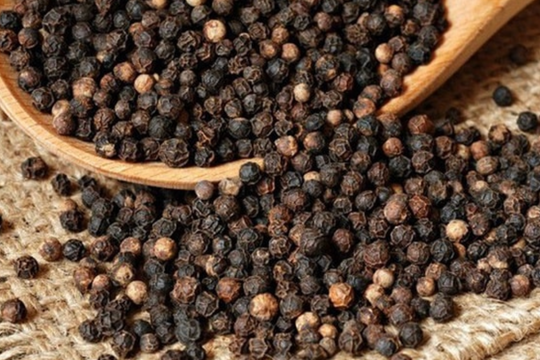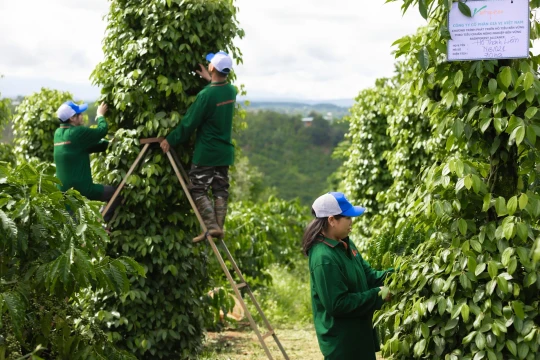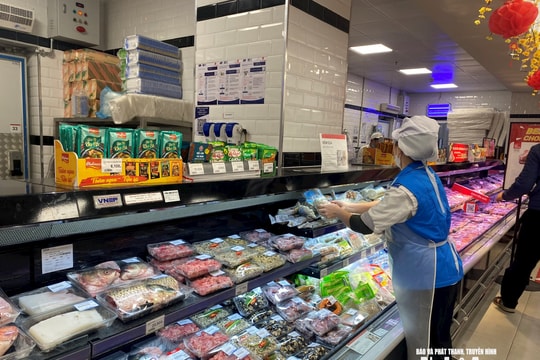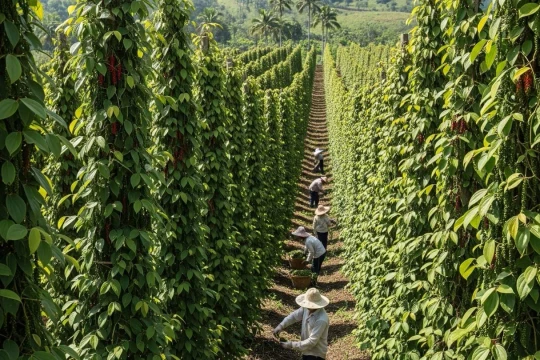Pepper price today November 11, 2025: Agricultural export turnover skyrocketed
Pepper price today, November 11, 2025, is around 145,000 - 147,000 VND/kg. Agricultural export turnover for the whole year of 2025 could reach around 67 - 70 billion USD.
Domestic pepper price today November 11, 2025
Specifically, Dak Lak pepper price was purchased at 147,000 VND/kg, unchanged from yesterday. Chu Se pepper price (Gia Lai) was purchased at 145,000 VND/kg, unchanged from yesterday. Dak Nong pepper price today was recorded at 147,000 VND/kg.
In the Southeast region, pepper prices today remain unchanged compared to yesterday. Specifically, in Ba Ria - Vung Tau, the price is currently at 145,000 VND/kg, unchanged from yesterday; in Binh Phuoc, pepper prices today are at 145,000 VND/kg.
| Province (survey area) | Purchase price (Unit: VND/kg) | Change (Unit: VND/kg) |
| Dak Lak | 147,000 | - |
| Gia Lai | 145,000 | - |
| Dak Nong | 147,000 | - |
| Ba Ria - Vung Tau | 145,000 | - |
| Binh Phuoc | 145,000 | - |
| Dong Nai | 145,000 | - |
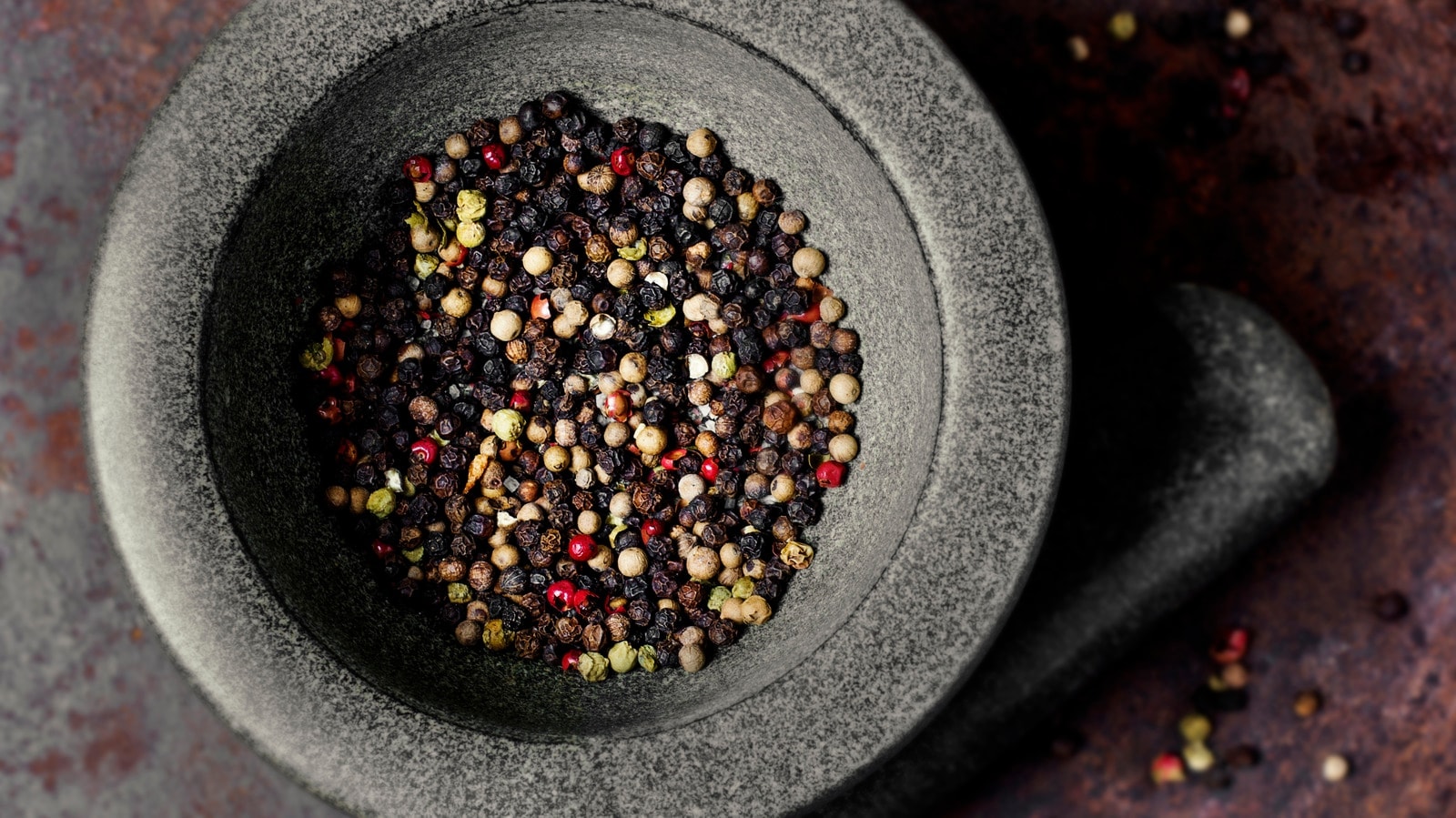
Although the picture of Vietnam's agricultural exports in 2025 has many positive signs, some product groups still face certain difficulties, affecting the overall growth rate. Experts say the agricultural sector needs to continue to come up with flexible solutions to remove barriers and maintain stable export momentum.
The rice industry is a typical example. In the first 10 months of 2025, Vietnam exported about 7.2 million tons of rice with a value of 3.7 billion USD, down 6.5% in volume and 23.8% in value compared to the same period in 2024. Fruits and vegetables were also affected when export turnover to South Korea decreased by nearly 1%. Notably, Thailand reduced the amount of fruits and vegetables imported from Vietnam by 55.6%, showing that competitive pressure is increasingly fierce.
However, the overall picture of the industry still has many bright spots as new products such as meat, eggs, and milk have begun to expand into international markets. If the current growth rate is maintained, the export turnover of agricultural products in 2025 could reach about 67 billion USD, even surpassing the 70 billion USD mark.
World pepper prices today
Update on world pepper prices from the International Pepper Association (IPC), at the end of the most recent trading session, IPC listed the price of Indonesian Lampung black pepper at 7,111 USD/ton, and the price of Muntok white pepper at 9,749 USD/ton.
Brazilian ASTA 570 black pepper prices stood at USD 6,100/ton. Malaysian ASTA black pepper prices remained stable at USD 9,200/ton; the country’s ASTA white pepper prices reached USD 12,300/ton.
Vietnam's black pepper price today is stable at a high level, trading at 6,400 USD/ton for 500 g/l; 550 g/l at 6,600 USD/ton; white pepper price at 9,050 USD/ton.
The latest report from Harris Spice says the new pepper harvest in Brazil will begin later this month, mainly in the southern states of Espirito Santo and Bahia, and will last until early 2026. This year’s production is forecast to be slightly higher than last year, while the northern region of Para has already completed harvesting. Despite good yields, sales remain low as farmers and traders have enough money to hold onto their stocks and are not under pressure to sell off.
The impact of US import tariffs on Brazilian pepper is still negligible. As of September this year, the South American country exported about 64,000 tons, higher than the same period in previous years. Harris Spice said that although inventories are still present in major producing countries such as Vietnam, Brazil and Indonesia, selling pressure is limited because high coffee prices allow pepper growers to hold onto their stocks. In addition, changes in US tariffs have made the market more cautious, with buyers tending to delay their trading decisions.
According to Harris Spice's forecast, current inventories in producing countries can help keep pepper prices stable in the short term, preventing sudden price fluctuations. However, if the supply-demand balance changes, prices may reverse upwards. In particular, the US's reduction of import tariffs will stimulate increased demand, while any disruption in supply could become a factor that pushes pepper prices up sharply in the coming time.

